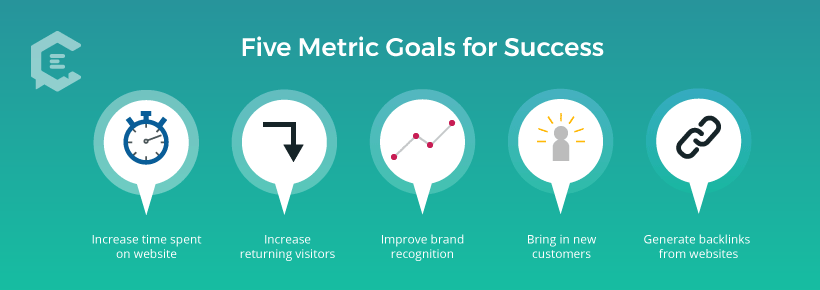This is the first installment of a new series looking at the changing face of branded content partnership strategy. Today, we’re looking at plausible scenarios for using a $5,000 budget on experimental marketing.
A client of mine is trying to overhaul his marketing strategy in light of the Facebook upheaval. I’m sure many of you are in similar situations. He built his company on Facebook, and now, the amount of money he has to spend on advertising is unsustainable.
Fifteen years ago his business model would have been direct-to-consumer catalogue sales. He might have had a local retail store as well. If he had decided to allocate any marketing spend toward advertising or promotion, it would have been a choice of buying an ad in a regional magazine, or buying a mailing list of potential new customers to send catalogues.
In the post-Facebook landscape, anything to do with catalogues or direct mail is obsolete, and magazines are struggling to stay relevant. But social media is potentially a game-changer. So, when a major change in marketing strategy is required, businesses — especially consumer-facing e-commerce ones — need to consider a range of different tactics and partners. The bad news is: Many social media opportunities have little hard data to support their ask. The good news is: A small sum of money can be allocated in many more directions than ever before.
In this example, the client has $5,000 to spend on social and digital marketing experiments over the next 3 months. His preferred marketing method where he allocates the most budget is programmatic ad buying. That will not change. This $5,000 is going toward experimental marketing.
His five metric goals for success are:
- Increasing amount of time spent on the website
- Increasing return visitors and customers
- Improving brand recognition and positive associations
- Bringing in new customers
- Generating backlinks from websites, ideally those with a high Google ranking
With those KPIs and parameters in mind, here are five ways he (or you) could potentially spend $5,000:
1. An influencer campaign on social media.
Instead of spending the entire budget on one influencer (shockingly easy to do in today’s market), let’s say we choose 10 influencers and pay each of them $500 for their posts:
Output on Instagram: 10 posts — 1 per influencer
OR
Output via “Twitter party”: 7 short blog posts promoting event + 45 Tweets
Pros:
- You can coordinate a campaign and a flight plan with this kind of campaign, so that posts are not publishing randomly, but are either tapping into a larger cultural moment or creating a moment and conversation of your own.
- You use other voices — authentic ones trusted by their audience, according to the proponents — to amplify your brand story.
- If you build copyright share into the contract, you’ll have the rights to repost the creators’ content across social and digital media indefinitely.
Cons:
- One constant risk of engaging networks, groups or just like-minded influencers in the same niche is that you’ll mainly get “pod” engagement (i.e., premeditated and automated engagement only from the people who are posting) and maybe people in engagement groups with them. Unless you have a sophisticated program or meticulous manual method for stripping away pod engagement, you may never know how much real engagement was earned from such a campaign. And if you do figure out how to get that number, it might be very low.
- Beyond needing language in your contract that grants your brand irrevocable license to re-use the submitted and approved content on digital and social media, you also need to grab said content as soon as you see it. It’s common for social media managers to run into situations where influencers/content creators don’t like extending “extra access” to content beyond the scope of the campaign. They might delete your sponsored post 30 days after the event, and good luck getting that image 6 months later if you didn’t save it.
Which metric goals does this support: #3, #4 and possibly #5 — if the blog posts drive to your landing page and not just to Twitter)
2. Host a small event (i.e., a brunch or pool party day). Use as promotional and content-creating opportunity.
Invite eight bloggers and influencers at $400 to be “brand ambassadors” posting throughout the event. Pay $800-$1,000 to the venue, including food and beverage. Hire a photographer/social content expert at $800-$1,000 to capture owned content.
Most content creators appreciate a fun event in a nice space — especially when they’re being paid to attend. Know who your bloggers are vs. social posters, and don’t expect them to post as much as the social-only posters. It’s definitely worth bringing in a photographer or social content creator on day rate to make sure and capture for your own channels.
Output: 3-5 blogger posts, 5-10 Instagram or Facebook posts from influencer/content creators — plus as many photos and posts as your in-house or freelance team creates.
Pros:
- Events are a good opportunity to capture a lot of content in a short time span, and to have some control over the kind of content — or at least the atmosphere where it’s being created.
- If you’re being vigilant on social media during the event, you should be able to capture most of the social posts as they go live
- Even in a social media world, it’s still so valuable to meet people face to face — especially when you’re paying them to represent your brand.
Cons:
- Tracking social content when it’s going live rapidly from multiple different people for several hours is a more complicated/overwhelming process than you realize, and if you’re not pro at it and don’t have a pro monitoring it, you might lose track.
- Again, mind your contracts — if language doesn’t stipulate that posts have to remain up for X amount of time, many influencers will delete social posts in less than a week.
- Unfortunately, because hosting an activity incurs other expenses, you won’t be able to afford as many content creators.
Which metric goals does this support: #3, #5 and hopefully #1 — if the content is good or tempting enough to inspire customers to click through it.
3. Find a “social video” producer/publisher of a medium size (i.e., 1-5 million Facebook followers) and pay them to produce a series of videos in partnership.
Even a year ago, this couldn’t have been accomplished on a $5,000 budget, as social video producers were still riding the tremendous wave of early Facebook traffic, wherein they accrued 10s of millions of followers through a combination of their own cleverly masked Facebook boosting and clickbait-optimized video strategy.
Facebook has turned off this tap, and these publishers now reach less than 1% of their own audience organically. So even if the social producer claims to have “millions of viewers in a proven audience,” buyers can negotiate much lower partnership fees based on actual current reach. Assume that you’ll need to reserve some money to boost that content on the social platform directly.
Output: 3 videos of 1-3 minutes each and still images for social posting
Pros:
- If you choose a partner that really does have a similar audience to yours, you can easily reach… let’s say thousands of new potential customers in a target demographic. (Probably not millions… Thanks, Facebook.)
- Supervising one content partner is much easier than monitoring many — and it’s also much easier to create a distribution plan and track it using branded content tools.
- Ideally, the partner creates content that closely matches the brand’s voice and aesthetics — and the brand is able to give input and approvals through the process.
Cons:
- Expect intense negotiation. Two years ago, the Tastemades of the world expected to get $50,000 for a campaign of this nature. Now, even though it’s a buyer’s market, it’ll still be a fierce battle to get a channel down to $5,000 for multiple videos. You probably won’t be able to get one with 5-10 million followers to this rate, but keep in mind they are all struggling — even the ones with 1-2 million. Also keep in mind that they pay their “preditors” (i.e., producer-videographer-editors) $300-$500 for a video, and everything else goes to the channel. Stand your ground.
- The reason that they’re struggling is that the major social channels only allow organic content to reach 1-5% of total followers. If your partner has 1 million followers, probably under 10,000 will have your video appear on their feed.
- Even if you think your producer understands your brand look/voice, keep a careful eye on them. In fact, think of yourself as co-producer. Insist that you review and approve creative at various points, or you may be disappointed when you see the “finished” video.
Which metric goals does this support: #3, #4
4. Hire a PR company and/or “name” expert to create blogs for your (the brand’s) own website that can also be used as media releases or articles to be reposted in entirety.
This is actually an extremely clever approach that uses quality content for multiple purposes. However, it can only be executed by someone with strong relationships to media and a working knowledge of SEO.
Output: 10-12 owned articles (AKA blog posts) and/or earned media placements
Pros:
- In an ideal scenario, you get strong backlinks with “link juice” from this approach.
- Also, media mentions! Power of the press, as they say. You’ll never know whether it moves the needle until you earn those mentions and see.
- This guarantees some quality owned content — and the client gets to weigh in on the topics and keywords.
Cons:
- Many PR companies say they can execute this approach, but a lot of them cannot deliver.
- Make sure you have a trusted third-party analytics tool for assessing the domain authority and “link juice” of other sites, or there will be arguments over what each placement is worth.
- The $5,000 in this case is just for the content creation fee and/or monthly retainer. Someone who’s very good at getting backlinks and placements will negotiate a tiered payment structure where they get paid more for placements — and the more and better the placements, the more you’ll have to pay.
- Social media posting is just an afterthought — or an add-on — for this kind of content marketer.
Which metric goals does this support: #1, #3, #4, #5
5. Hire a professional content creator or content agency to create and execute a strategic, owned content plan that includes SEO blog posts/articles and social posts. Self-distribute the content to outlets and aggregators.
This approach seems the most labor-intensive and requires a lot of patience. However, as this blog post by ClearVoice Director Justin McKinley illustrates step by meticulous step, it is the form of content marketing that succeeds in the long run at increasing traffic, return visitors, and the amount of time they spend on your site.
Output: 12 blog posts over 3 months and calendar content on 2-3 social channels
Pros:
- This will build up your owned content until that part of your website is a destination in and of itself.
- Integrates digital and social content strategy seamlessly.
- Blog content will support product pages and vice versa. Context and internal link opportunities galore!
- Long-tail results — ideally you’ll continue to see traffic to popular pages for months and even years.
Cons:
- You must have reliable content creators. (This is why ClearVoice exists!)
- Again, this is not an approach for sites that need immediate results.
- You’ll need to understand, or work with someone who understands, SEO and content strategy. (Again, this is why ClearVoice exists!)
Which metric goals does this support: #1, #2, #3, #4, #5













